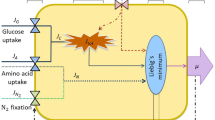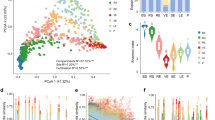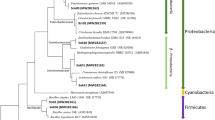Abstract
IN a recent publication, Hino and Wilson1 describe the fixation of nitrogen by a bacterium strongly resembling Bacillus polymyxa. The significance of this finding should not escape notice, as it has an important bearing upon a long-standing controversy.
This is a preview of subscription content, access via your institution
Access options
Subscribe to this journal
Receive 51 print issues and online access
$199.00 per year
only $3.90 per issue
Buy this article
- Purchase on SpringerLink
- Instant access to full article PDF
Prices may be subject to local taxes which are calculated during checkout
Similar content being viewed by others
References
Hino, S., and Wilson, P. W., J. Bact., 75, 403 (1958).
Löhnis, F., and Smith, N. R., J. Agric. Res., 6, 676 (1916); 23, 401 (1923).
Bisset, K. A., J. Gen. Microbiol., 7, 233 (1952).
Bisset, K. A., J. Gen. Microbiol., 13, 442 (1955). Bisset, K. A., Baird-Parker, A. C., Hale, C. M. F., Jeynes, M. H., and Lawrence, J. C., ibid., 16, 572 (1957).
Rosenblum, E. D., and Wilson, P. W., J. Bact., 57, 413 (1949).
Author information
Authors and Affiliations
Rights and permissions
About this article
Cite this article
BISSET, K. Natural Relationships of the Nitrogen-fixing Bacteria. Nature 182, 405 (1958). https://doi.org/10.1038/182405a0
Issue date:
DOI: https://doi.org/10.1038/182405a0
This article is cited by
-
Heat Resistance and Pigmented Variants of Rhizobium
Nature (1969)
-
Zur Transformierbarkeit der Knöllchenbakterien
Archiv für Mikrobiologie (1965)



